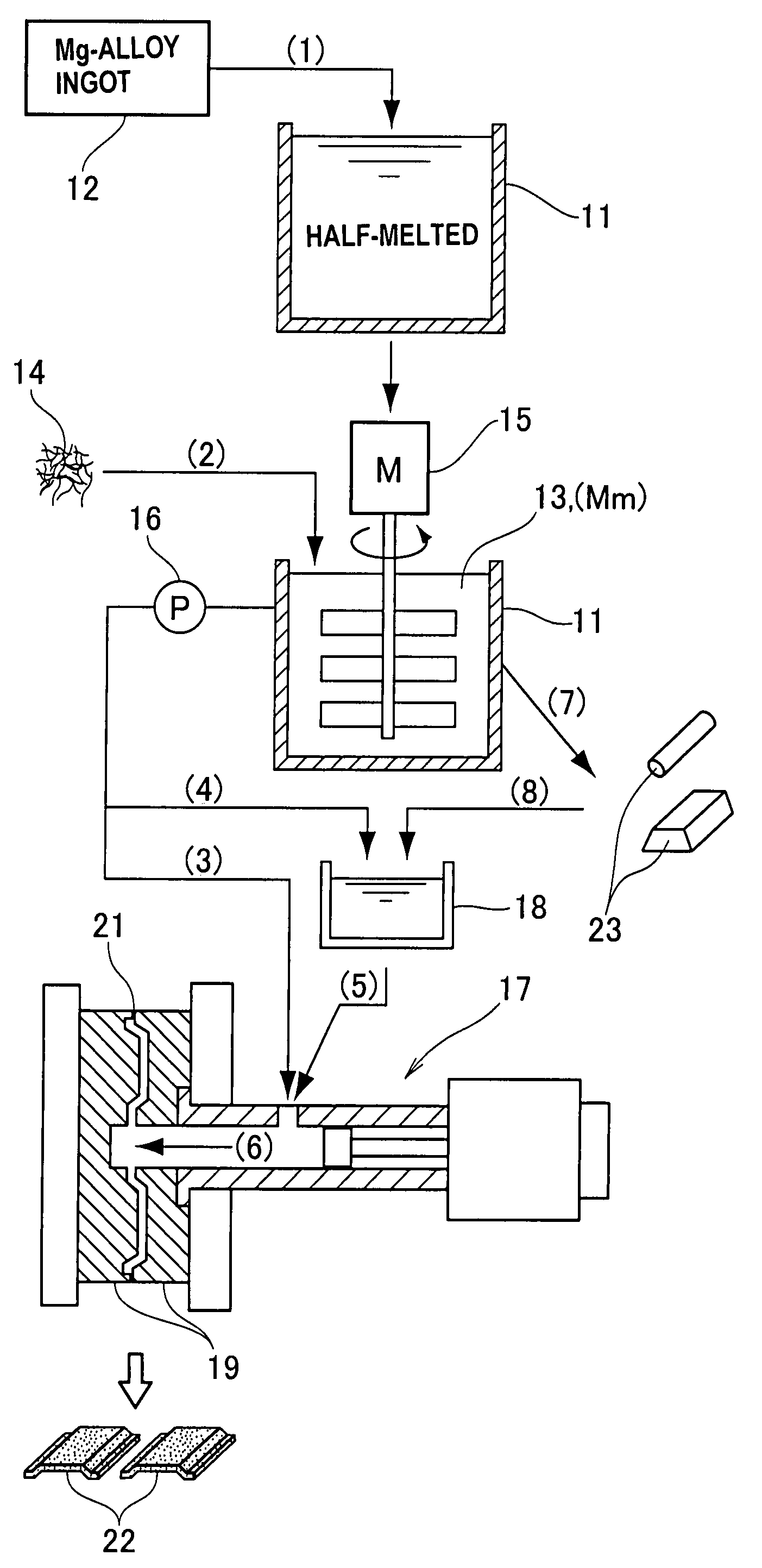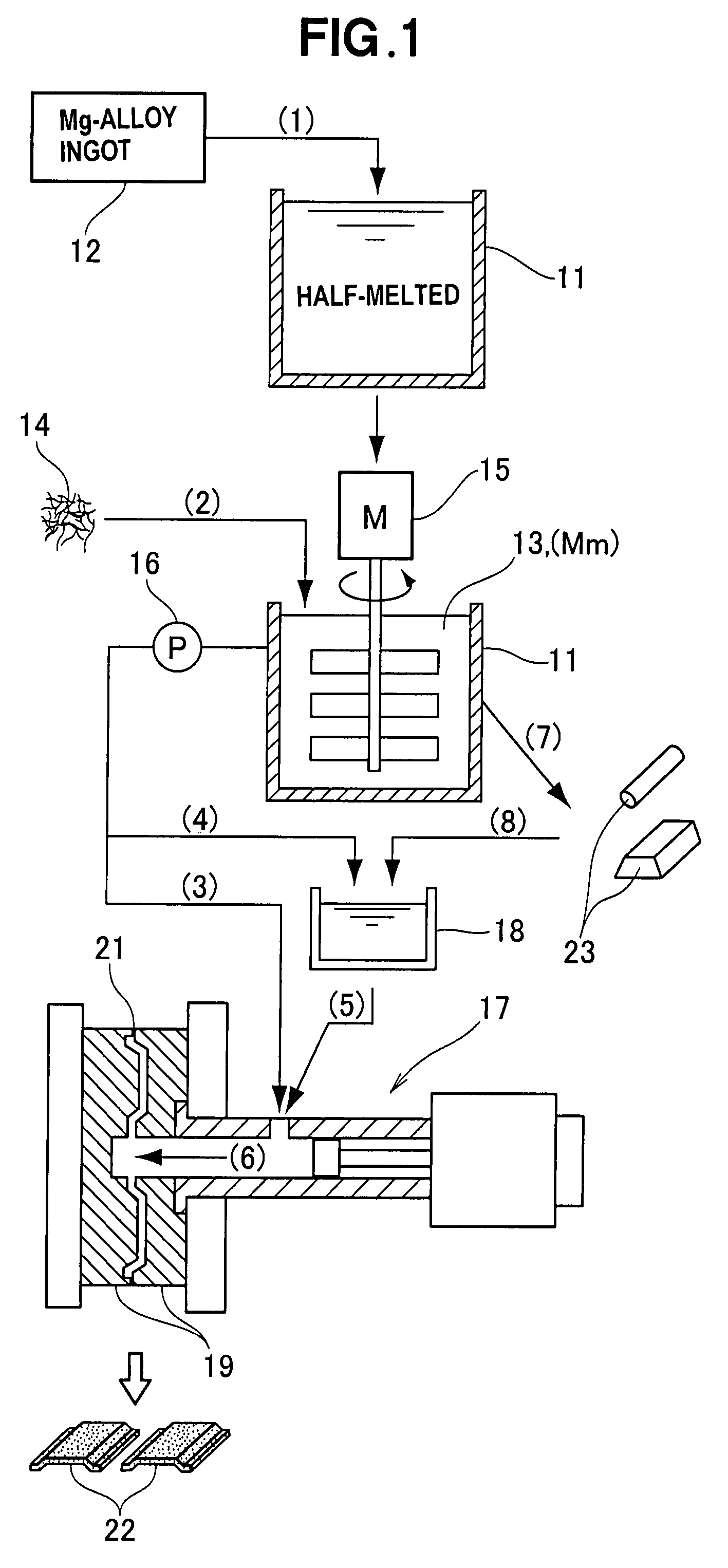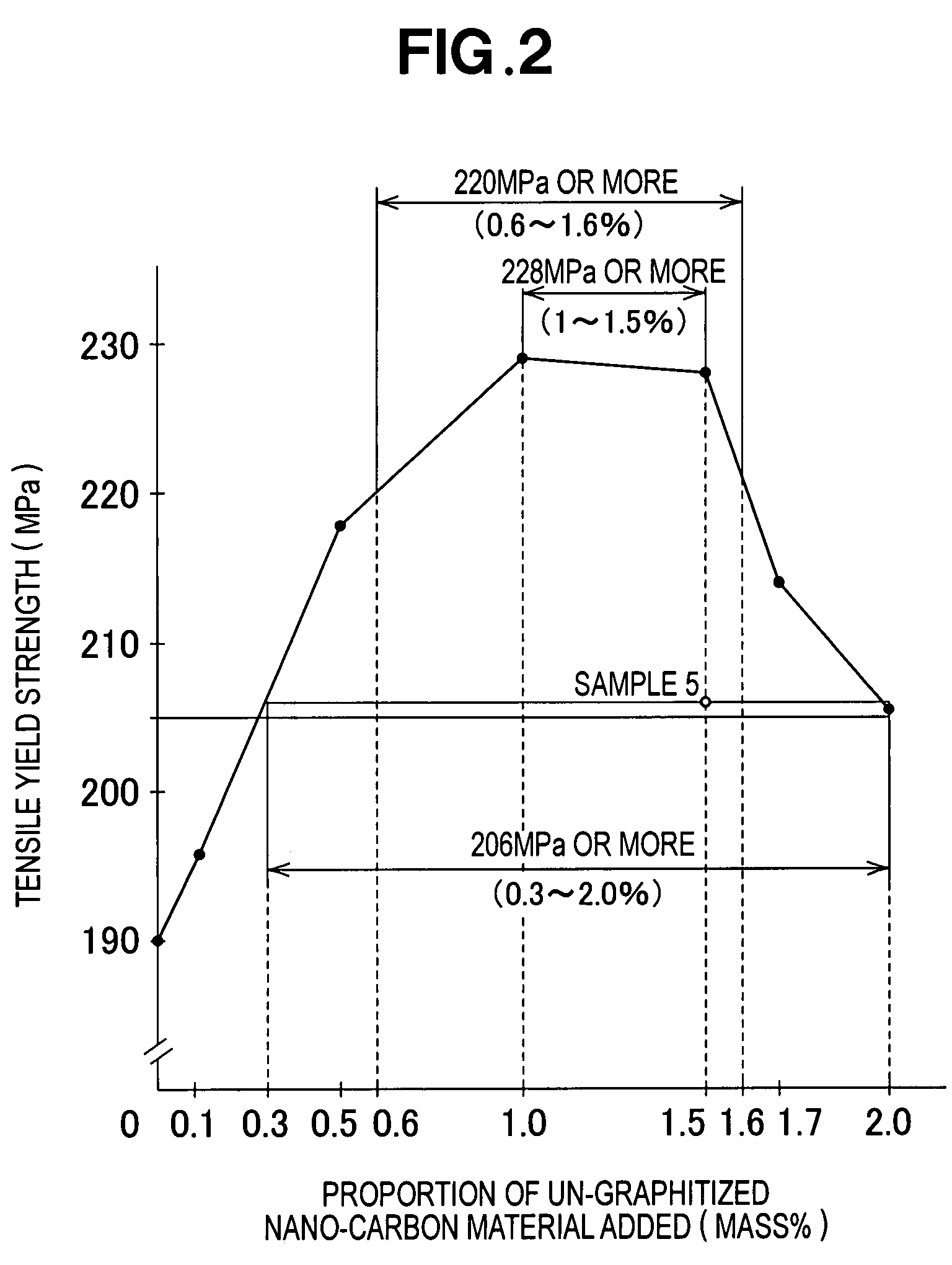Method for manufacturing composite metal material and method for manufacturing composite-metal molded article
a technology of composite metal and metal alloy, which is applied in the field of manufacturing composite metal materials and method for manufacturing composite metal molded articles, can solve the problems of poor wettability of nanocarbon materials in relation to metal alloys, inability to obtain composite metal materials having the desired mechanical and thermal properties, and limited movement of nanocarbon materials, so as to achieve high wettability and improve mechanical and thermal properties of the resulting composite metal molded article, the effect of increasing the degree of freedom of production
- Summary
- Abstract
- Description
- Claims
- Application Information
AI Technical Summary
Benefits of technology
Problems solved by technology
Method used
Image
Examples
experimental examples
[0060]Experimental examples according to the present invention will be described below. The present invention is not limited to the experimental examples. Throughout the specification, the term “nongraphitized nanocarbon” should be construed as “nanocarbon before graphitization”.
[0061]Materials:
[0062]Metal alloy: ASTM AZ91D (magnesium alloy die-cast, equivalent to JISH 5303 MDC1D).
[0063]Nanocarbon material: Nongraphitized nanocarbon material.
[0064]Mixing ratio: Shown in the following table.
[0065]Stirring: Three to five hours in a stirrer.
[0066]Injection Molding:
[0067]Size of the mold cavity: JIS5 piece (65-mm length×27-mm width×3-mm thickness)
[0068]Injector type: Metal molding machine
[0069]Injection pressure: 20 MPa
[0070]Melting temperature: 590 to 600° C.
[0071]Injection rate: 1.5 m / s
[0072]Tensile Testing Machine:
[0073]Testing machine made by Shimadzu Corporation (AUTOGRAPH AG-250KNIS)
[0074]The tensile yield strengths (the value defined by JIS K7113 as “the tensile stress at the fir...
PUM
| Property | Measurement | Unit |
|---|---|---|
| tensile yield strength | aaaaa | aaaaa |
| tensile yield strength | aaaaa | aaaaa |
| tensile yield strengths | aaaaa | aaaaa |
Abstract
Description
Claims
Application Information
 Login to View More
Login to View More - R&D
- Intellectual Property
- Life Sciences
- Materials
- Tech Scout
- Unparalleled Data Quality
- Higher Quality Content
- 60% Fewer Hallucinations
Browse by: Latest US Patents, China's latest patents, Technical Efficacy Thesaurus, Application Domain, Technology Topic, Popular Technical Reports.
© 2025 PatSnap. All rights reserved.Legal|Privacy policy|Modern Slavery Act Transparency Statement|Sitemap|About US| Contact US: help@patsnap.com



